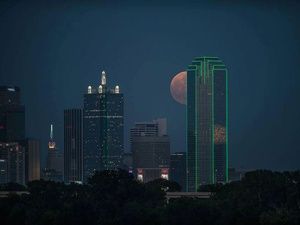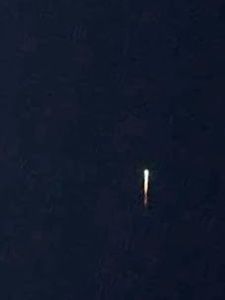OF THE
TIMES
Saturday July 12th, 2014
We were on the beach at North Padre Island Texas watching the moon, when my granddaughter & I both noticed a light screaming across the night sky. We both thought is was a plane or helicopter and then looked at each other with our mouthes open. It was too big and too fast for either. It was a round circle of light screaming across and downward across the sky. All of a sudden it changed into two lights and then was gone. It was about 9 pm. Everyone with us was looking toward the ocean & moon and the light was off to our left. No doubt it was something, but not sure what. What could this have been. We are still talking about it......
We'll know our disinformation program is complete when everything the American public believes is false.
GDPetti If you have discovered that psychopathic behaviour is in the DNA you will be the first. Please pray explain? Sounds racist to me.
Red haired giants = Paraaqua skulls and possible Denivosian origin as yet waiting to be proven.
I suppose they would be better off if they were actually taken to Russia. Otherwise I have been confirmed in my conviction not to believe anything...
Enhance your research skills and become proficient in assessing the quality of evidence with this insightful essay example [Link] Explore the...
I'm an Ozzie, throw the bitch in jail. A shitty jail with lots of pissed off Muslims. Too bad they don't have 'trans' women in India, that would...
To submit an article for publication, see our Submission Guidelines
Reader comments do not necessarily reflect the views of the volunteers, editors, and directors of SOTT.net or the Quantum Future Group.
Some icons on this site were created by: Afterglow, Aha-Soft, AntialiasFactory, artdesigner.lv, Artura, DailyOverview, Everaldo, GraphicsFuel, IconFactory, Iconka, IconShock, Icons-Land, i-love-icons, KDE-look.org, Klukeart, mugenb16, Map Icons Collection, PetshopBoxStudio, VisualPharm, wbeiruti, WebIconset
Powered by PikaJS 🐁 and In·Site
Original content © 2002-2024 by Sott.net/Signs of the Times. See: FAIR USE NOTICE


The Sun just went nearly spotless today, like somebody hit the 'off' switch, or pulled the plug.
Wham, just like that.
Wonder what that will do to the celestial display machine?